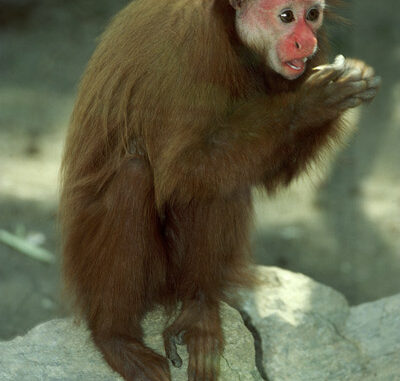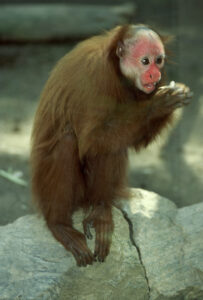

PHOTO 24/Stockbyte/Getty Images
Close-up of a red bald-headed uakari. These unusual monkeys are found in areas of tropical rain forest around the Orinoco River that are prone to flooding. Fruit makes up the majority of their diet, although they also consume buds, leaves, and insects.
The Orinoco River, one of the longest rivers in South America, begins in the Parima Mountains on the border of Brazil and Venezuela, continues as it forms part of the border between Colombia and Venezuela, and eventually empties into the Atlantic Ocean near the island of Trinidad. On its journey the Orinoco River and its many tributaries flow through rain forests, swamp forests, and grasslands. During the October to March dry season, at its smallest, the Orinoco River Basin covers an area about the size of Texas. During the April to October wet season, it expands to a size comparable to the area of Alaska.
The vast Orinoco River region is home to abundant plant and animal life such as the uakari monkey, and the yellow-banded poison dart frog. Also, several endangered species including the Orinoco crocodile, river dolphin, giant river otter, and the giant anaconda live in the Orinoco River Basin. During the wet season, the flooding Orinoco and its tributaries attract tens of thousands of water birds and a developing ecotourism industry.
See the following slideshow for a glimpse at some of these fascinating animals.
Explore More
1. The Orinoco River deposits tar-rich sediments that may be used as a future fuel source. Explore other alternate energy sources currently being used in South America.
2. Explore the derivation of the name What language does it come from, and what was the original meaning? Do you believe this is an apt name for the river and its delta?
Share What You Know
Angel Falls is located in the Orinoco River Basin. Research and plan a trip from your city to the majestic Angel Falls in Venezuela. What time of year would you go? Would you go by plane, boat, bus, horseback, or all of the above? Share with your class.